Chinese Zongzi is a popular traditional food that is made from sticky rice, other fillings, and bamboo leaves or reeds or large leaves. They normally differ in taste, shape, and size as well as the fillings used.
In this post, we’ll be taking an in-depth look into what the Chinese zongzi is, where it originated from, why it’s eaten and when it is eaten. As a bonus, we will also share with you a simple recipe on how to make it.
what is zongzi?
Zongzi is a traditional Chinese food item that consists of sticky rice stuffed with various fillings and wrapped in bamboo leaves. It is commonly eaten during the Dragon Boat Festival, which falls on the fifth day of the fifth month of the lunar calendar (usually in June).
The main ingredient of zongzi is glutinous rice, also known as sticky rice. The rice is soaked and then mixed with other ingredients such as meats (typically pork belly), salted duck egg yolks, beans, peanuts, or preserved fruits. The mixture is then wrapped tightly in bamboo leaves, forming a pyramid or triangular shape, and secured with twine or string.
After being assembled, zongzi is traditionally steamed or boiled for several hours until the rice becomes soft and infused with the flavors of the fillings. The bamboo leaves impart a subtle aroma and add a distinctive taste to the dish.
Zongzi has a long history in Chinese culture and is associated with the legend of Qu Yuan, a famous poet and statesman from ancient China. The Dragon Boat Festival commemorates his death, and it is believed that people threw zongzi into the river to prevent fish from eating his body and to honor his spirit.
Today, zongzi is enjoyed not only during the Dragon Boat Festival but also as a popular snack or meal throughout the year. It is cherished for its rich flavors, unique texture, and cultural significance.
what is zongzi made of?
Zongzi, a traditional Chinese food, is made by wrapping glutinous rice with leaves (such as reed leaves, bamboo leaves, calamus leaves, or rush leaves). The fillings can include glutinous rice, mung beans, pork belly, red bean paste, mixed nuts, ham, shiitake mushrooms, and salted egg yolk, among others. Due to regional culinary preferences, zongzi has developed different flavors, categorized into two main types: savory and sweet.
The custom of eating zongzi is closely associated with the Dragon Boat Festival, which falls on the fifth day of the fifth month of the lunar calendar each year. During this festival, people across China soak glutinous rice, wash the leaves, and wrap zongzi in their homes. Zongzi is not only deeply rooted in Chinese history and culture but has also spread widely.
Zongzi, a traditional food of the Han ethnic group in China, is a steamed dish made by wrapping glutinous rice with zong leaves. It is one of the most deeply ingrained traditional foods in Chinese history and culture, with a wide-reaching influence. The custom of eating zongzi during the Dragon Boat Festival has prevailed in China for thousands of years and has also spread to countries such as Korea, Japan, and Southeast Asia.
The term “zong” refers to the zong leaves used to wrap the zongzi. The main ingredients include glutinous rice and various fillings, wrapped in bamboo leaves (or other types of leaves such as indocalamus leaves or calamus leaves). Zongzi comes in various shapes, including pointed or square corners. Zongzi has a long history and was originally offered as a tribute to ancestral spirits. In different regions, zongzi is referred to differently. In the northern regions where millet is produced, zongzi is made with millet and has a triangular shape. In ancient times, it was called “jiao shu” (角黍) in the north.
what leaves are used for zongzi?
The leaves used for wrapping zongzi are either reed leaves or rattan leaves. Rattan leaves are mainly used in the southern regions, while reed leaves are more commonly used in the northern regions. In some areas, zongzi can be wrapped with leaves such as zongba leaves, banana leaves, or bamboo leaves. When using rattan leaves to wrap zongzi, they should be thoroughly cleaned and then boiled in a pot. Rattan leaves come from plants of the Calamus genus, which are native to Hainan Island and Taiwan, China. They are commonly found in southern regions, especially in the vast area south of the middle and lower reaches of the Yangtze River.
Here is the translation of the different types of leaves used to wrap Zongzi, a traditional Chinese sticky rice dumpling:
Ruǎnzhú (箬竹叶) – This is one of the most common types of Zongzi leaves found in the market, popular in southern regions. Ruanzhu leaves are wide, long, and possess good toughness. Generally, 3-5 leaves are sufficient to wrap one Zongzi. It is naturally suitable for making Zongzi.
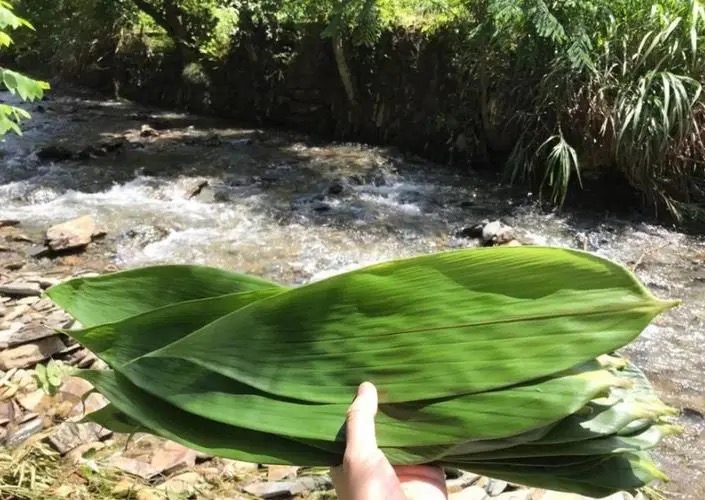
Lúwěi (芦苇叶) – This is another commonly used Zongzi leaf, popular in northern regions. Luwei leaves are found abundantly in the wild in the north. They are moderately wide, long, and thick. They are often used to wrap triangular-shaped Zongzi and have a light fragrance when steamed.
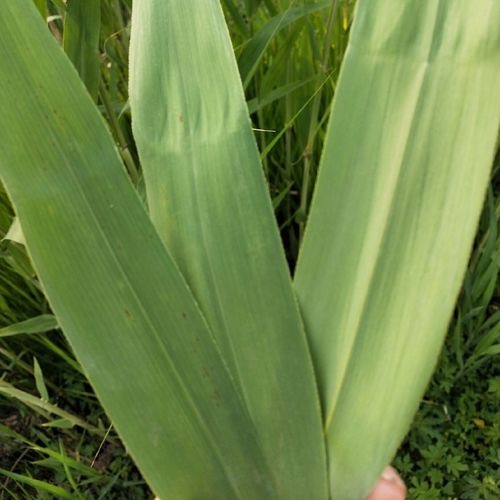
Húshù (槲树叶) – Also known as Húbāo (槲包叶), these leaves are broad and sturdy, resembling a large palm. They have a unique flavor. Hushu leaves are mainly used in Henan, Shaanxi, and Shanxi provinces to wrap long-shaped Zongzi called “Hubao.” They are rarely seen in other regions, and many people are not familiar with them.
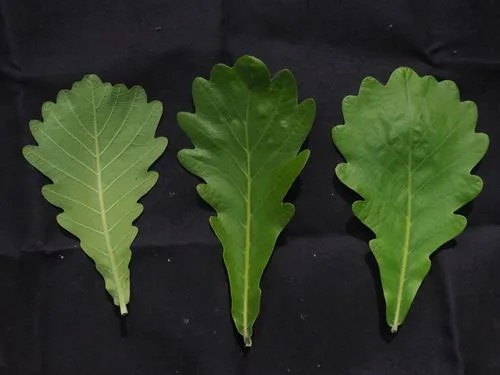
Jiāobái (茭白叶) – Also known as Gūyè (菰叶), Jiabai leaves are one of the oldest types of Zongzi leaves, now only used in a few places. These leaves are slender and suitable for wrapping horn-shaped Zongzi, also known as “Jiaoshu,” which is a traditional specialty Zongzi. They are rare, and many people have not tasted them.
Héhuāyè (荷花叶) – When it comes to lotus leaves, many people think of “Lotus Leaf Chicken” as they are known for their fragrant aroma. Lotus leaves are also used to wrap Zongzi, bringing a distinct character. They are wide, thick, and commonly used to wrap square-shaped Zongzi. The natural fragrance of the lotus leaf enhances the freshness and taste of the sticky rice.
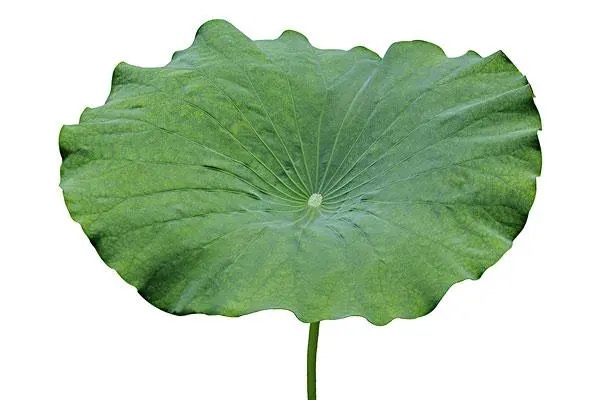
Bājiāo (芭蕉叶) – Bajiao leaves are commonly found in the southern region and resemble large fans. After cutting a Bajiao leaf, it can be used to wrap several Zongzi. Nowadays, many people in southwest and south China prefer using Bajiao leaves to wrap Zongzi. A few leaves are usually enough to wrap square-shaped Zongzi.
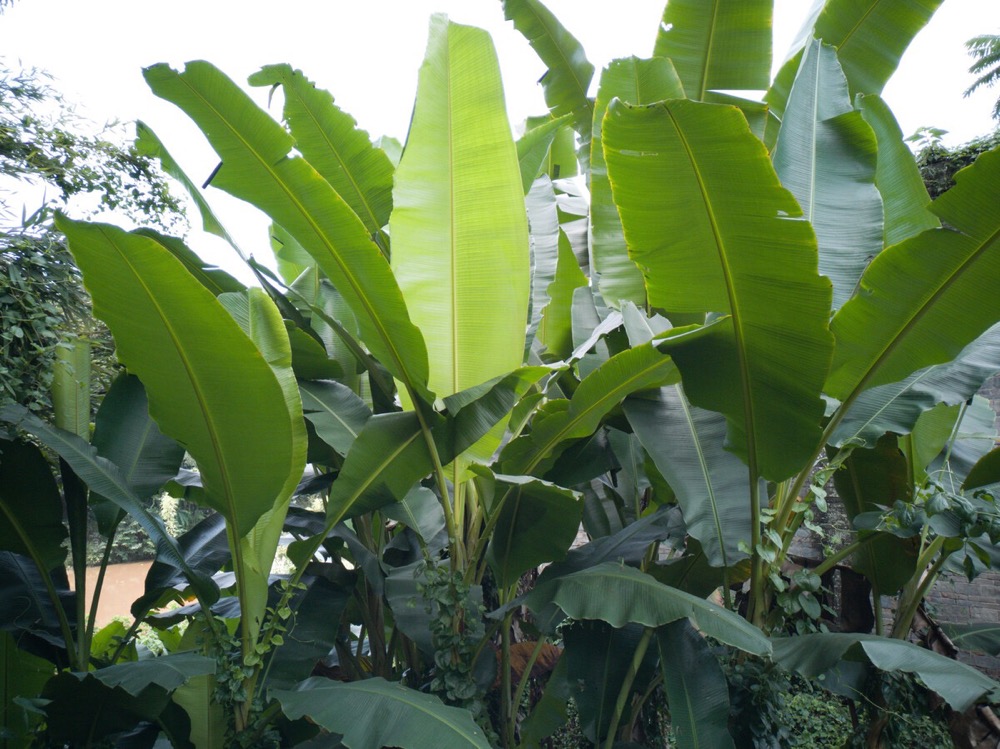
Zhǐyè (柊叶) – Zhì leaves are also large and oval-shaped, reaching half a meter in length and over 20 centimeters in width. They are mainly produced in Guangdong, Guangxi, and Yunnan provinces, especially in Guangxi, where Zhì leaves are used every year to wrap Zongzi. However, they are rarely seen elsewhere, and many people are unfamiliar with them.

Lègǔyè (勒古叶) – This type of leaf is quite unique. It is only 4-5 centimeters wide but can reach a length of one meter. It has a special fragrance and many thorns on its sides. Before using it to wrap Zongzi, the thorns need to be removed, and the leaf should be softened, boiled, and cooked. Currently, it is commonly used to wrap Zongzi in Maoming and Zhanjiang cities in Guangdong province.
Zhúsǔn bāo (竹笋包) – This refers to the outer covering of bamboo shoots. When bamboo shoots are harvested, their outer layers are peeled off. After boiling, they become soft and can be used to wrap Zongzi, providing a natural bamboo fragrance. This method is common in Sichuan and is considered one of the traditional specialty Zongzi, rarely found in other regions.
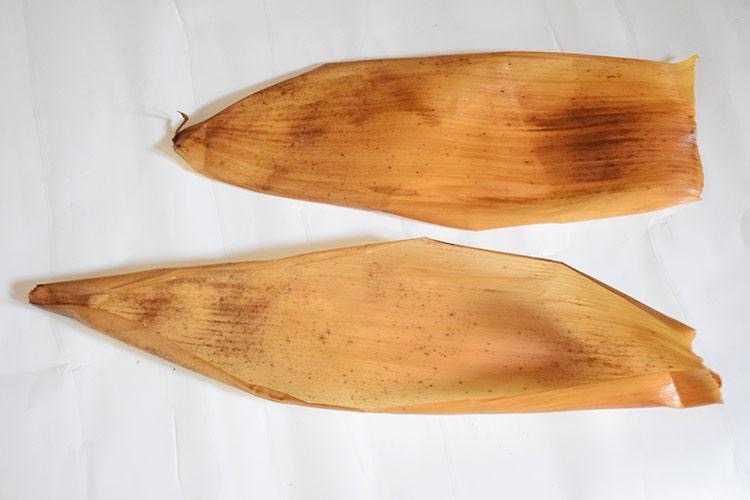
what is inside zongzi?
Common fillings for zongzi include: alkali water, sweet dates, date paste, peanuts, mung beans, cured meat, fresh meat, fatty pork, red bean paste, lotus seeds, mixed nuts, ham, shiitake mushrooms, salted egg yolk, lotus seed paste, preserved vegetables, red beans, chestnuts, longan fruit, assorted ingredients, taro, purple sweet potato, etc.
Creative fillings for zongzi include: grapes, peaches, shredded pork in fish-flavored sauce, chocolate, abalone, pineapple, pickled mustard greens, assorted fruits, green plums, etc.
What Is Zongzi Called in English?
Over the years the Chinese Zongzi has been incorporated into many other cultures including in the US. As a result, it goes by very many names. In places like Indonesia, Taiwan, Malaysia, and Singapore, for example, the zongzi is commonly referred to as Zang, bakcang, or bacang. In other places like Mauritius, it’s called zong.
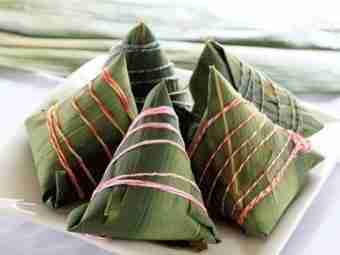
In English, however, the name refers to sticky rice dumplings. Although it is not the traditional dumpling, the technique of preparing is similar. It involves filling the sticky rice with your filling of choice and wrapping it with bamboo shoots, reeds, or large leaves. The wrapping is then tied with five red-colored strings.
Just like there are many names used to refer to this Chinese delicacy, there are also many variations of it. Each culture has a different way of making it in terms of the type of rice, the fillings, and the leaves used. The shapes and sizes will also differ. In China, the two main varieties are sweet and savory zongzi. The Northern Chinese are the ones who mainly eat the savory kind with meat or egg yolk. The southern Chinese are known to eat the sweet variety with Chinese dates and/or red beans
what are the types of zongzi?
The types of zongzi include Beijing zongzi, Cantonese zongzi, Jiaxing meat zongzi, alkaline water zongzi, yellow rice zongzi, roast pork zongzi, bamboo tube zongzi, honey-chilled zongzi, and more. Each type represents the unique characteristics of different regions.
Beijing Zongzi:
Representing the sweet zongzi from northern China, Beijing zongzi is usually triangular or quadrangular in shape. The most common fillings are sweet dates and red beans, although some may use preserved fruits. The sticky and fragrant glutinous rice wraps around the filling, creating a unique flavor.
Cantonese Zongzi:
Cantonese zongzi is a representative type from southern China. It is smaller in size and has a distinctive conical shape. The fillings can include salted egg yolks, shiitake mushrooms, peanuts, fatty pork, and lotus seeds, resulting in a rich and satisfying texture.
Jiaxing Meat Zongzi:
Jiaxing meat zongzi is a traditional specialty from Jiaxing, Zhejiang province. It is known for its sticky yet non-greasy texture, delightful taste, and moderate sweetness. The most famous variation is the fresh meat zongzi, which consists of high-quality glutinous rice wrapped around chunks of premium pork leg. It is savory and highly regarded as a classic savory zongzi.
Alkaline Water Zongzi:
Alkaline water zongzi is named after the use of alkaline water in the ingredients. The glutinous rice is soaked in alkaline water overnight, drained, and then wrapped into zongzi. When cooked, these zongzi have a golden color. They can be enjoyed by sprinkling white sugar or adding sugar syrup. In some regions, red dates and red bean paste are added during the preparation, providing a natural sweetness that eliminates the need for additional sugar.
Yellow Rice Zongzi:
Yellow rice zongzi from Shandong province is wrapped with yellow glutinous rice and filled with red dates, offering a unique flavor. It is often served with white sugar to enhance the sweetness.
Roast Pork Zongzi:
Roast pork zongzi is a traditional delicacy unique to Fujian’s Minnan region. To prepare it, glutinous rice is soaked and dried, then stir-fried with braised pork, chestnuts, and other ingredients. The zongzi is wrapped in bamboo leaves and cooked until tender. Roast pork zongzi is best enjoyed hot and is often served with condiments such as satay sauce, garlic paste, and chili sauce, adding to its deliciousness.
Bamboo Tube Zongzi:
Bamboo tube zongzi is a specialty of Yunnan’s ethnic minorities. It is made by using fresh bamboo tubes, such as golden bamboo, fragrant bamboo, thin bamboo, and sweet bamboo, as containers. Each section of bamboo is filled with water, rice, and ingredients, then sealed with broad banana leaves or zongzi needles. Glutinous rice or fragrant rice can be used for the rice portion.
Honey-Chilled Zongzi:
Honey-chilled zongzi is a unique snack found in Xi’an and the surrounding areas of Guanzhong and southern Shaanxi province. It has a withered appearance, white and jade-like in color. It provides a refreshing and cooling experience and does not contain any filling. The classic way to enjoy it is to slice it after it cools and drizzle it with sugar, osmanthus, or rose syrup.
One Bite Zongzi:
The One Bite Zongzi is now quite common, but it is still most popular in the Jiangsu, Zhejiang, and Shanghai regions. This type of zongzi fully embodies the exquisite style of the people in the Jiangnan area. It is also known as “One-Leaf Zongzi,” emphasizing its small and delicate nature. Due to its limited shape, it cannot contain too much filling. The most common fillings are bean paste and plain sticky rice. In places like Jiaxing and Shanghai, small pieces of ham are also included to add a touch of flavor to these pocket-sized delicacies.
Pillow Zongzi:
Compared to the regular zongzi in Jiangnan, Huzhou zongzi stands out with its elongated shape and rich flavor. Sweet versions are filled with red bean paste mixed with lard, while savory ones are filled with soy sauce-marinated pork. Although each zongzi only contains one piece of fatty meat and one piece of lean meat, they are incredibly flavorful.
Steamed Wrapped Zongzi:
Cantonese cuisine is famous, and Cantonese-style zongzi truly lives up to its reputation. They are not only large in size but also have a rich variety of fillings. They include salted egg yolks, barbecued pork, chestnuts, mushrooms, ham, and salted meat, giving a feeling of tasting all the culinary treasures in one bite. This cooking method has also greatly influenced zongzi in Taiwan, where richness and abundance are emphasized.
Ash Zongzi:
Compared to the pristine and translucent honey-dipped zongzi, the ash zongzi, a specialty in Guizhou and Yunnan, may initially appear dull and unappealing. However, don’t underestimate it. The gray color comes from a plant similar to lemongrass, which is burned and mixed with glutinous rice. It imparts a unique fragrance to the zongzi and also aids digestion, promoting and improving digestive health.
Square Zongzi:
Square zongzi is originally from Vietnam, but it is also widely popular in the Yunnan, Guangxi, and Western Hunan regions of China. Unlike the elaborate ingredients found in Cantonese zongzi of similar size, square zongzi tends to lean toward a simple and rustic Southeast Asian style. The main ingredients are simply glutinous rice, pork, and mung beans, wrapped in banana leaves or lotus leaves. It can be eaten directly or sliced, roasted, pan-fried, or dipped in sauce.
Sichuan Zongzi:
People in Sichuan love spicy food, so zongzi in Sichuan also comes in sweet and spicy varieties. Sichuan’s spicy zongzi is a renowned and traditional snack due to its intricate preparation and complex flavors. The glutinous rice and red beans are soaked for 5 to 6 hours, then the water is drained and Sichuan pepper powder, Sichuan salt, monosodium glutamate, and a little preserved meat are added. The zongzi is wrapped into square shapes, weighing around 60 grams each. When cooked, it becomes fragrant, spicy, and uniquely flavorful.
Na Da Zongzi:
Nada is actually the name of a town near Danzhou. This type of zongzi, also known as “Luoji Zongzi,” is the most representative among several special zongzi varieties in Hainan. Na Da zongzi has a square-conical shape and commonly includes salted egg yolk and fatty pork as fillings. Interestingly, the cooked zongzi has a light green hue on the surface of the sticky rice, thanks to the zong leaves used for wrapping.
Zongzi in the world
Dragon Boat Festival is a traditional Chinese custom where people eat zongzi, a unique seasonal food in China. However, there are different customs related to eating zongzi in other countries as well.
North Korea: In North Korea, there is a custom of eating “wheel cakes” on Dragon Boat Festival. People cook fresh and tender wormwood leaves, crush them, mix them with rice flour, and shape them into wheel-shaped cakes. The North Koreans call them “wheel cakes.”
Japan: Japanese people also eat zongzi during Dragon Boat Festival, which falls on May 5th in the Gregorian calendar. However, the zongzi in Japan is not made of glutinous rice but rather ground rice flour. The shape of the zongzi is different from Chinese zongzi, as it resembles a seed.
Vietnam: Zongzi in Vietnam is wrapped in banana leaves and comes in two shapes: round and square. They believe that round zongzi represents the sky, while square zongzi represents the earth, symbolizing the unity of heaven and earth, which brings good luck. There is also a sweet zongzi made by kneading glutinous rice flour into a dough, stuffing it with coconut shreds, red beans, or mung beans, and shaping it into a diamond-shaped zongzi. After steaming, it is dipped in honey or sugar for a delicious treat. In Vietnam, square savory zongzi is consumed during Dragon Boat Festival. This type of zongzi is filled with shrimp, lean meat, salted duck egg yolks, and red beans, reflecting the flavors of Fujian and Guangdong cuisines.
Myanmar (Burma): People in Myanmar enjoy eating zongzi, but it does not have cultural or commemorative significance. Zongzi in Myanmar is made with glutinous rice as the main ingredient, filled with banana and coconut flakes, giving it a fragrant, soft, and sweet taste.
Singapore: Singaporeans love flowers, and whenever guests visit, the hosts often present them with several bouquets. They also serve zongzi soaked in flower juice for guests to taste. These flower juice zongzi are wrapped in multi-sided shapes with green leaves, about the size of an egg. When the green leaves are unwrapped, the zongzi inside is made of light green rice flour, dyed with flower juice, and has an enticing color and a fragrant and delicious taste.
Malaysia: In Malaysia, the zongzi made by people is somewhat similar to those from the Guangdong region in China. In addition to the more common varieties like meat-filled zongzi and ham-filled zongzi, there are also several types filled with red bean paste and coconut flakes, which are fragrant and delicious.
Thailand: The zongzi wrapped by Thai people is small, about the size of an egg, and is wrapped in green zongzi leaves. Therefore, after steaming, it has a light green color and a very fragrant taste.
Mexico: Zongzi in Mexico, also known as “tamal,” is made with coarse cornmeal as the main ingredient. It is filled with meat slices and chili peppers, wrapped in corn husks or banana leaves, and has a unique flavor.
Indonesia: Indonesians pay special attention to the fillings of their zongzi, which include pork, beef, chicken, cured meat, ham, Guangwei sausage, shrimp, and fish. Indonesian zongzi is made from glutinous rice, which is easier to digest than sticky rice. Combined with the enticing aroma of bamboo leaves, it stimulates people’s appetite.
Costa Rica: In Costa Rica, zongzi is made using a special sticky cornmeal as the main ingredient and is filled with chicken, beef, carrots, potatoes, olives, and chili peppers. Some are even topped with beef sauce and then wrapped in fresh banana leaves, forming a flat square shape.
Philippines: Zongzi in the Philippines is somewhat unique. It is typically wrapped in a long rectangular shape and tastes similar to zongzi from the Jiangsu and Zhejiang regions of China. They consider zongzi to be an indispensable food during Christmas.
Latin America: A similar food to zongzi is popular in Latin America, which is likely derived from traditional indigenous cuisine. They wrap zongzi in banana leaves, using cornmeal and beans as the main ingredients, resulting in a fragrant taste. There is a legend about it as well: Over 400 years ago, Spanish colonizers ruled most parts of Latin America, and the indigenous people were forced to work outside their homes. Women would cook cornmeal and beans and wrap them in banana leaves as dry rations for their loved ones. Over time, it became their tradition.
Peru: Peruvians eat zongzi during Christmas. The whole family gathers together to celebrate Christmas and eat zongzi. Even daughters who have married return to their parents’ home to taste the flavor of their hometown zongzi.
Venezuela: As Christmas approaches, every household in Venezuela wraps zongzi, which has become a common scene during the festival. These zongzi are made primarily with cornmeal, filled with ham, cured meat, or sausages, and sometimes include olives and raisins. They are wrapped in fresh banana leaves in a long rectangular shape, weighing about half a kilogram each. Once the banana leaves are roasted, the zongzi is ready to eat.
Cambodia: Zongzi in Cambodia is called “buddei zong.” Instead of using plant leaves for wrapping, they use a cloth bag. The bag is filled layer by layer with glutinous rice, red beans, red dates, and other ingredients, and then steamed until hot. When consumed, the cloth bag is peeled off, and the zongzi is sliced with a knife.
what does zongzi taste like?
Zongzi has a unique taste and texture due to its ingredients and cooking method. The exact taste can vary depending on the type of zongzi and its fillings. However, in general, zongzi has a savory and aromatic flavor with a combination of sticky rice and the flavors infused from the fillings.
The sticky rice used in zongzi is slightly sweet and has a sticky, glutinous texture. The rice is usually soaked and seasoned before cooking, which adds to its overall taste. The fillings inside the zongzi can range from sweet to savory, offering a diverse range of flavors.
For sweet zongzi, such as those filled with red bean paste, the taste is sweet, rich, and often complemented by the natural sweetness of the sticky rice. Sweet zongzi may also include ingredients like dates, jujubes, or sweetened nuts, further enhancing the overall sweetness.
Savory zongzi, on the other hand, can have a wide variety of flavors. Fillings may include marinated pork, salted egg yolk, mushrooms, peanuts, and other ingredients that provide a savory, umami taste. Some regional variations, like the Sichuan zongzi, may even incorporate spicy flavors.
The cooking method of boiling or steaming the zongzi helps infuse the flavors of the fillings into the rice, creating a harmonious blend of tastes. The aroma of the zongzi, particularly when unwrapped, can be enticing and appetizing.
Overall, zongzi offers a delightful combination of sticky rice, fillings, and seasonings, resulting in a unique and flavorful culinary experience.
what does zongzi represent?
Zongzi is one of the oldest traditional delicacies in China, with a long history and cultural significance. It has a unique symbolism and carries profound meanings. The shape of zongzi, tightly wrapped in bamboo leaves or tofu skin, holds symbolic significance and represents various aspects of Chinese culture. It symbolizes family reunion, harmony, happiness, and signifies familial love, friendship, romantic love, teacher-student relationships, and more. Zongzi embodies the idea of a complete and blissful gathering and conveys blessings.
Symbolism of Zongzi: Seeking Academic Success
The Chinese characters for “zong” and “zhong” have similar pronunciations, and in ancient times, “zhong” was associated with achieving academic success. During the Dragon Boat Festival, if a scholar wanted to pursue academic achievements, they could be gifted zongzi to eat, wishing them success in their exams. In modern times, when enjoying zongzi during the Dragon Boat Festival, people express their wishes for students to have smooth and successful exams, and obtain good grades.Both ancient imperial examination candidates and modern high school students(gao kao) have the custom of eating zongzi to seek success in their exams.
Symbolism of Zongzi: Fertility
As early as the Jin Dynasty, zongzi became an essential food during the Dragon Boat Festival. The pronunciation of “zong” is similar to the Chinese word for “offspring.” In ancient customs, people attached importance to homophonic blessings, and eating more zongzi symbolized the desire for having more children. Traditional zongzi recipes sometimes include medicinal ingredients known for their health benefits, such as Xuezhiren (Chinese hawthorn) and Chidou (red bean).
Symbolism of Zongzi: Safety and Security
Zongzi originated as a commemoration of Qu Yuan, a famous poet and statesman. Legend has it that after Qu Yuan drowned himself in the Miluo River, people were concerned that evil creatures in the river might harm his body. To divert their attention, they wrapped glutinous rice in bamboo leaves and tossed them into the river. Therefore, zongzi also carries the meaning of seeking safety and security. In many customs, zongzi is tied with a red string and placed in children’s pockets, symbolizing a protective charm.
zongzi history
Originally, “zong” belonged to a type of “he,” which was a tribute offered to gods and ancestors during festive occasions. There were various types of “he,” and “zonghe” was just one of them.
As early as the Pre-Qin period, there was mention of an item called “baoju” in the book “The Book of Rites.” “Baoju” referred to food wrapped in plants and presented as gifts to friends, which can be considered as the earliest form of “zong-like food.”
During the Spring and Autumn period, the direct predecessor of zongzi appeared in China. People used lotus leaves (or Jiaobai leaves) to wrap glutinous millet (or millet rice) into a shape resembling ox horns. These were then steamed or boiled as offerings to ancestors and deities. Due to their horn-like shape, they were called “jiaoshu” (horned millet).
In addition to using lotus leaves (or Jiaobai leaves) to wrap glutinous millet, people also sealed the rice inside bamboo tubes and roasted them, known as “tongzong.”
During the Han Dynasty, people soaked glutinous millet in water containing plant ash (alkaline water), then wrapped the millet in lotus leaves into a square shape and cooked it. This already had a close resemblance to the appearance of zongzi in later times (its direct descendant is the alkaline water zongzi). In Xu Shen’s “Shuowen Jiezi,” a dictionary from the Han Dynasty, “zong” (粽) was explained as “lotus leaves wrapped around rice.”
By the Jin Dynasty, zongzi had become a festive food for the Dragon Boat Festival. The book “Fengshi Ji” written by Zhou Chu, the Prefect of Xinping during the Western Jin Dynasty, recorded, “On the fifth day of the fifth lunar month, the prefect celebrates with jiaoshu (zongzi), and everything goes smoothly.”
During this period, zongzi had developed significantly, and filled zongzi with various ingredients. In addition to glutinous rice, medicinal herbs like Yizhiren (hawthorn) were added. Zongzi with this filling was called “Yizhi zong.” Furthermore, people also incorporated rare poultry meat, pork (such as pork zongzi), chestnuts, and other ingredients into the glutinous rice, resulting in a wide variety of zongzi. Due to their delicious taste and attractive appearance, zongzi became popular as gifts exchanged between friends.
During the Tang Dynasty, people described the rice used in zongzi as “white and lustrous like jade.” The shape of zongzi also began to vary, including cone-shaped and diamond-shaped zongzi. Japanese visitors to the Tang Dynasty, who sent envoys to China, also recorded zongzi in their own literature, referring to them as “Da Tang zongzi” (Great Tang zongzi).
In the Song Dynasty, the zongzi family thrived even more. “Mijian zong” (fruit-filled zongzi), which included fruits as fillings, appeared. There is a line in the poem by poet Su Dongpo that goes, “Sometimes, I see yangmei (a type of fruit) in zongzi.” During this period, people also created various shapes with zongzi, such as building towers, pavilions, wooden carts, and horses, showcasing their creativity.
By the Yuan and Ming dynasties, the materials used to wrap zongzi had diversified. In addition to lotus leaves, zongzi was also wrapped in bamboo leaves and reed leaves, breaking free from the seasonal limitation of lotus leaves. The fillings for zongzi became diverse and colorful, including sweet bean paste, pine nuts, dates, walnuts, and more.
During the Qing Dynasty, zongzi had already reached a mature stage, and there were not many changes. However, “ham zongzi” filled with ham as a stuffing appeared. By this time, zongzi had become an auspicious food. It is said that during the imperial examinations, people would specially prepare “bi zong” (brush-shaped zongzi) for the scholars before they went to the examination hall. The shape of the zongzi resembled a writing brush, and the homophonic term “bi zhong” meant “certain success.”
when were zongzi invented?
Zongzi originated in the Spring and Autumn Period. In the Spring and Autumn Period, people wrapped glutinous millet in lotus leaves, which was called “jiao shu” or “angled millet.” Later, some people sealed glutinous millet in bamboo tubes and cooked it, known as “tong zong” or “tube zongzi.”
The term “Dragon Boat Festival” first appeared in the “Fengtu Ji” written by Zhou Chu during the Jin Dynasty: “On the midsummer Dragon Boat Festival, we cook wu (a type of bird) and jiao shu.” The “jiao shu” mentioned here is the earliest name for zongzi. In comparison, the term “jiao shu” is more vivid, with “jiao” referring to the triangular shape of zongzi and “shu” indicating the glutinous millet inside. Li Shizhen’s “Compendium of Materia Medica” in the Ming Dynasty also provides an explanation, stating that zongzi is made by wrapping glutinous millet in lotus leaves and cooked into a pointed or palm leaf-shaped food, hence the name “jiao shu.”
When it comes to the origin of zongzi, it may be traced back even further. There are various theories, but the most convincing one is the “wrapped and cooked” theory. As early as 500,000 years ago, when humans invented the use of fire for cooking, they wrapped food in tree leaves and cooked it over fire. Though it may not be called zongzi, it already had the rudiments of zongzi. During the Stone Cooking Age around 100,000 years ago, humans dug pits on the ground, lined them with animal skins, added water, and threw in heated stones to make the water boil. They cooked food wrapped in plant leaves until it was ripe. This method is more similar to the steaming and cooking process of zongzi today.
As mentioned earlier, zongzi was previously called “jiao shu,” which originated in the Spring and Autumn Period.
According to records, in the Spring and Autumn Period, people wrapped glutinous millet in lotus leaves to form a shape resembling ox horns, which was called “jiao shu.” They also sealed rice in bamboo tubes and roasted it, known as “tong zong.” Both of these were types of “zong” in the category of “zong li.” In the Spring and Autumn Period, offering sacrifices to gods and ancestors was a common practice during festivals and important occasions, ranging from emperors and nobles to common people. “Zong li” was used as a tribute and offering during these ceremonies, and this custom can be traced back to the Three Dynasties.
where did zongzi originate?
Miluo in Hunan is known as the birthplace of zongzi, and its variety and craftsmanship are highly sophisticated. What makes Miluo zongzi particularly intriguing is that its focus is never on the filling. It can contain any filling or even none at all. The most important aspect is the outer layer of zong leaves, which cannot be chosen randomly. The tender and broad upper leaves are carefully selected to wrap the zongzi and create a more exquisite result.
Moreover, in Miluo, almost every household has mastered this skill from an early age. As the Dragon Boat Festival approaches, the aroma of zongzi fills the air in every home. While the birthplace of zongzi is in the southern region, there are slight differences between northern and southern zongzi.
who invented Zongzi?
The invention of zongzi, a traditional Chinese sticky rice dumpling wrapped in leaves, does not have a specific attributed inventor. Zongzi has a long history and its origins are believed to date back thousands of years. It is a traditional food that has evolved and been passed down through generations.
The exact origin of zongzi is unclear, but it is believed to have emerged during ancient times in China. Different regions and cultures in China have their own variations of zongzi, incorporating local ingredients and flavors. Zongzi is particularly associated with the Dragon Boat Festival, also known as Duanwu Festival, which takes place on the fifth day of the fifth lunar month. The festival is rooted in ancient customs and legends and zongzi has become an integral part of the celebrations.
While there isn’t a specific individual credited with inventing zongzi, it is a culinary tradition that has been embraced and cherished by the Chinese people for centuries. It has become an iconic symbol of Chinese culture and is enjoyed not only during festivals but also throughout the year as a delicious and nostalgic delicacy.
when is zongzi day?
Zongzi Day, also known as Duanwu Festival or Dragon Boat Festival, is celebrated on the 5th day of the 5th month of the lunar calendar. The date of Zongzi Day varies each year in the Gregorian calendar since the lunar calendar is based on the moon’s cycles. To provide you with the specific date of Zongzi Day in a particular year, I would need to know the year you are referring to.
why do we eat zongzi on dragon boat festival?
The Dragon Boat Festival, also known as Duanwu Festival, is celebrated by eating zongzi, which is said to commemorate Qu Yuan. After the Qin army conquered the state of Chu, Qu Yuan, unable to bear the loss of his country, wrote his final poem “Huai Sha” on the fifth day of the fifth month before throwing himself into the Miluo River, embracing a rock. The people were afraid that the fish and shrimp in the river would devour Qu Yuan’s body, so they threw rice dumplings into the river to feed them. This later became the custom of eating zongzi.
Eating zongzi during the Dragon Boat Festival is a traditional custom of the Chinese people. Zongzi, also known as “zongzi” in Mandarin, is a type of food made from sticky rice wrapped in leaves. “Zong” is one of the types of offerings made for worshipping gods and ancestors during festivals. There are various types of zongzi made for different festivals, as it is an ancient custom to offer zongzi as a tribute to gods and ancestors. Due to different regional culinary preferences, zongzi has developed different flavors in the north and south of China. From a taste perspective, zongzi can be categorized into savory and sweet varieties.
zongzi Chinese new year
During Chinese New Year, it is common for individuals to make zongzi at home. They can choose their own ingredients according to their preferences. Nowadays, besides the traditional sweet date flavor, zongzi comes in various flavors such as salted egg yolk, pork, peanut, mixed nuts, and fruit.
Eating zongzi during Chinese New Year symbolizes prosperity and the arrival of abundant wealth. The phrase “Nian Nian Zong, Nian Nian Zhong” conveys the meaning of having zongzi every year and being prosperous every year. Zongzi is considered an auspicious item.
The pronunciation of zongzi sounds similar to “zhongzi,” which means “having children” in Chinese. This association brings the wish for a thriving family.
In some regions, eating zongzi during Chinese New Year is a custom associated with carrying on the family lineage. Zongzi has a long history and was originally used as an offering to ancestors and deities. The naming and shape of zongzi differ between the northern and southern regions. In the north, zongzi is made with glutinous millet, resulting in a pyramidal shape called “jiao shu.” Due to regional culinary preferences, zongzi has developed distinct flavors in the northern and southern regions, and it can be categorized into savory and sweet varieties.
zongzi story
The Dragon Boat Festival originated from the commemoration of Qu Yuan, and there is a legend associated with it. According to the “Biography of Qu Yuan and Jia Yi” in “Records of the Grand Historian,” Qu Yuan was a minister of King Huai of Chu during the Spring and Autumn period. He advocated for the selection of talents, enriching the country, and strengthening the military. He strongly advocated forming an alliance with the state of Qi to resist the Qin state. However, he faced fierce opposition from aristocrats like Zi Lan, and Qu Yuan was dismissed from his position and expelled from the capital, eventually being exiled to the areas around the Yuan and Xiang rivers. During his exile, he wrote immortal poems such as “Li Sao” (Encountering Sorrow), “Tian Wen” (Heavenly Questions), and “Jiu Ge” (Nine Songs), expressing his concerns for the country and its people. These poems have a unique style and profound influence, hence why the Dragon Boat Festival is also known as the Poets’ Festival.
In 278 BC, the Qin army captured the capital of Chu. Qu Yuan witnessed the invasion of his homeland and was deeply saddened. However, he could not bear to abandon his country and, on the fifth day of the fifth lunar month, after writing his final work “Huai Sha” (Lament for Departure), he embraced a rock and jumped into the Miluo River, sacrificing his life. Thus, he composed a magnificent patriotic melody with his own life. According to legend, after Qu Yuan’s death, the people of Chu mourned him deeply and flocked to the banks of the Miluo River to pay their respects. Fishermen rowed their boats back and forth on the river, trying to find his body. One fisherman took out food such as rice balls and eggs prepared for Qu Yuan and threw them into the river, saying that by feeding the fish and shrimp, they would not bite Qu Yuan’s body. People followed suit. An elderly physician poured a jar of realgar wine into the river, saying that it would intoxicate the dragons and water creatures, preventing them from harming Qu Yuan. Later, to prevent the rice balls from being eaten by the dragons, people came up with the idea of wrapping rice in fragrant leaves and tying them with colored threads, which eventually developed into zongzi. From then on, on the fifth day of the fifth lunar month each year, the customs of dragon boat races, eating zongzi, and drinking realgar wine were established to commemorate the patriotic poet Qu Yuan.
what to eat with zongzi?
Zongzi can be enjoyed on its own as a satisfying and flavorful snack. However, there are several accompaniments that can complement the taste of zongzi. Here are some popular options:
Soy Sauce: Many people like to dip their zongzi in soy sauce to add a savory and umami flavor.
Pickles: Pickled vegetables, such as radish or cucumber pickles, provide a refreshing and tangy contrast to the rich and sticky zongzi.
Fresh Fruits: Some people enjoy pairing zongzi with fresh fruits like watermelon, grapes, or oranges to balance the flavors and add a touch of sweetness.
Steamed or Stir-Fried Vegetables: A side dish of steamed or stir-fried vegetables, such as bok choy, broccoli, or snap peas, can provide a lighter element to the meal.
Sesame Oil: Drizzling a small amount of sesame oil over the zongzi can enhance its aroma and add a hint of nuttiness.
Chinese Tea: Zongzi pairs well with a cup of Chinese tea, such as green tea or pu-erh tea, which can help cleanse the palate and balance the richness of the zongzi.
Ultimately, the choice of accompaniments for zongzi depends on personal preference and regional traditions. Feel free to experiment and find your favorite combination to enjoy with this delicious traditional delicacy.
is zongzi healthy
Zongzi can be a nutritious and filling food option when consumed in moderation as part of a balanced diet. However, it’s important to note that the nutritional content and healthiness of zongzi can vary based on the ingredients used and the cooking method employed. Here are some factors to consider:
Calories: Zongzi is typically made with glutinous rice, which is high in carbohydrates and can contribute to calorie intake. The fillings and ingredients used, such as meats, nuts, or sweeteners, can also affect the overall calorie content.
Protein and Fat: Zongzi can contain protein and fat, depending on the type of filling used. For example, zongzi filled with lean meats or nuts can provide protein and healthy fats. However, zongzi filled with fatty meats or excessive amounts of oil can be higher in saturated fats.
Fiber: Zongzi made with whole grains or incorporating ingredients like beans or nuts can provide dietary fiber, which is beneficial for digestion and helps promote feelings of fullness.
Sodium: Some varieties of zongzi may be seasoned with soy sauce or other condiments, which can increase the sodium content. Excessive sodium intake should be monitored, especially for individuals with certain health conditions like high blood pressure.
Nutritional Variations: Different types of zongzi can have varying nutritional profiles. For example, sweet zongzi with fillings like red bean paste may be higher in sugars, while savory zongzi with ingredients like mushrooms or vegetables can provide additional vitamins and minerals.
To make zongzi healthier, consider the following tips:
- Opt for fillings that are lower in saturated fats and higher in lean proteins or plant-based proteins.
- Choose zongzi made with whole grains or alternative grains for added fiber and nutrients.
- Control portion sizes to manage calorie intake.
- Balance zongzi consumption with a variety of other nutritious foods, such as vegetables, fruits, and lean proteins, to ensure a well-rounded diet.
Overall, zongzi can be enjoyed as part of a healthy lifestyle when consumed in moderation and alongside other nutritious food choices.
Taboos for eating zongzi
Zongzi should not be eaten cold and should be consumed while hot. The main ingredient in zongzi is glutinous rice, which contains high levels of amylopectin. Heating the glutinous rice causes amylopectin to gelatinize, making it more easily digested. Once it cools down, the starch will retrograde, resulting in increased molecular cohesion and reduced digestibility.
It is advisable to drink tea or water while eating zongzi to aid in swallowing and digestion. It is also recommended to eat zongzi in moderation, consuming smaller portions or opting for mini zongzi.
Zongzi should be thoroughly heated and cooked until soft before consumption.
Individuals with stomach conditions should choose plain rice zongzi, avoid dipping them in sugar, and avoid excessive sweetness.
Patients with gallstones, gallbladder inflammation, and pancreatitis should avoid zongzi with high-fat and high-protein content such as meat zongzi and salted egg yolk zongzi.
Important considerations:
A typical savory zongzi contains approximately one bowl of rice and provides around 400 to 500 calories. Therefore, experts recommend that women should not consume more than three zongzi per day, while men should not exceed five zongzi per day.
When eating zongzi, combining them with vegetables and fruits can aid in intestinal and gastric motility, helping to prevent digestive discomfort caused by zongzi consumption.
Furthermore, it is best to avoid eating zongzi within two hours before bedtime and refrain from consuming water-rich and cooling fruits such as watermelon to avoid diarrhea or abdominal pain.
Zongzi should be eaten while hot, and zongzi with added oil, meat, or salted egg yolk are particularly unsuitable for consumption when cold, especially for individuals with poor digestive capacity. Some lower-quality glutinous rice may become hard when cold, and the retrogradation phenomenon is more pronounced in zongzi made with mixed grains.
Zongzi is considered a staple food and can be eaten during any meal, including breakfast. Breakfast is especially suitable because appetite is usually low, and the fragrant and warm zongzi is convenient to eat.
The calorie content of vegetarian zongzi is not as high as rumored, but it is still a grain-based food. When consuming zongzi, it is necessary to reduce the intake of other staple foods such as rice, steamed buns, and noodles accordingly. Otherwise, excessive starch intake may lead to weight gain and potential digestive discomfort. Generally, consuming one large zongzi is equivalent to reducing one small bowl of rice.
Zongzi is not suitable for certain individuals
Zongzi, with its fragrant and delicate flavor, soft and sticky texture, and various fillings, is beloved by many people. However, the main ingredient used to make zongzi, glutinous rice, is high in oiliness and stickiness. Excessive consumption can lead to digestive discomfort, increased stomach acid secretion, bloating, abdominal pain, diarrhea, and other symptoms. Therefore, it is important not to overindulge in zongzi.
When zongzi is steamed or boiled, it releases a gelatinous substance that increases the burden on digestive enzymes. Combined with its warm and stagnating nature, excessive consumption can further burden the gastrointestinal system. Therefore, the following individuals are advised to avoid or consume zongzi in moderation:
- Cardiovascular disease patients: Meat-filled zongzi and zongzi with lard and red bean paste contain high levels of fat. Consuming them excessively can increase blood viscosity, affect blood circulation, and worsen the burden on the heart, leading to angina and myocardial infarction in individuals with hypertension, hyperlipidemia, and coronary heart disease.
- Elderly individuals and children: Zongzi is primarily made of glutinous rice, which has a high stickiness. Excessive consumption by the elderly and children can easily lead to digestive discomfort. If zongzi is consumed, it is better to choose smaller zongzi, especially those made with coarse grains and potatoes, or zongzi without added oil or meat. It is recommended to chew slowly and thoroughly for better digestion.
- Patients with stomach and intestinal diseases: When zongzi is fully cooked, it releases a gelatinous substance that increases the burden on digestive enzymes. Overconsumption can be particularly problematic for individuals with gastric and duodenal ulcers, potentially causing ulcer perforation and bleeding, worsening their condition. Additionally, excessively oily zongzi can cause indigestion and bloating, aggravating the diseases.
- Diabetes patients: Zongzi often contains high-sugar ingredients such as red dates and bean paste. Without moderation, this can impair pancreatic function, rapidly increase blood sugar and urine sugar levels, and worsen the condition of diabetes patients.
is zongzi vegan
Zongzi can be made in both vegan and non-vegan variations, depending on the ingredients used in the filling. Traditional zongzi recipes often include fillings such as pork, chicken, or salted egg yolk, which are not suitable for a vegan diet.
However, there are plenty of vegan zongzi options available. Instead of animal-based fillings, vegan zongzi may feature plant-based alternatives like mushrooms, tofu, beans, or vegetables. These fillings can be seasoned and cooked in various ways to create flavorful and satisfying vegan zongzi.
It’s important to carefully check the ingredients and inquire about the filling components when purchasing or consuming zongzi to ensure it aligns with a vegan diet. Homemade zongzi can also be customized to fit specific dietary preferences, including vegan ingredients.
By using plant-based fillings and avoiding animal-derived ingredients, zongzi can be adapted to be vegan-friendly, providing a tasty option for individuals following a vegan lifestyle.
how to make zongzi?
Making zongzi at home can be a fun and rewarding culinary experience. Here’s a general guide on how to make zongzi:
Ingredients:
Glutinous rice
Bamboo leaves (pre-soaked and cleaned)
Fillings of your choice (e.g., meat, mushrooms, beans, nuts, etc.)
Cooking twine or strips of bamboo leaves for tying
Instructions:
Soak the glutinous rice: Rinse the glutinous rice and soak it in water for at least 4 hours or overnight. Drain the rice before using.
Prepare the fillings: Prepare the fillings of your choice. For example, if using meat, marinate it with your desired seasonings. If using mushrooms or beans, soak and cook them until tender. Ensure the fillings are ready to be wrapped.
Prepare the bamboo leaves: Soak the bamboo leaves in hot water for about 1 hour or until they become soft and pliable. Clean the leaves and trim off any excess or damaged parts.
Wrapping the zongzi:
- Take two bamboo leaves and overlap them to form a cone shape.
- Add a small amount of soaked glutinous rice to the bottom of the cone.
- Layer the fillings on top of the rice.
- Add more glutinous rice on top of the fillings, pressing it down gently.
- Fold the bamboo leaves over the rice to cover the filling completely.
- Fold the sides of the leaves towards the center, forming a tight and compact triangle shape.
- Secure the zongzi by tying it tightly with cooking twine or strips of bamboo leaves.
Cooking the zongzi:
- Place the wrapped zongzi in a large pot or a steamer basket.
- Fill the pot with enough water to cover the zongzi.
- Bring the water to a boil and then reduce the heat to medium-low.
- Cover the pot and steam the zongzi for about 2 to 3 hours, or until the rice is fully cooked and tender. Add more water if needed during the steaming process.
Cooling and serving:
- Remove the cooked zongzi from the pot and let them cool slightly.
- Unwrap the zongzi before serving.
- Zongzi can be enjoyed warm or at room temperature.
Remember, the specific ingredients, fillings, and cooking times may vary depending on regional traditions and personal preferences. Feel free to customize the recipe according to your taste.
Making zongzi requires some practice to perfect the wrapping technique, but it can be a delightful culinary adventure to create this traditional Chinese delicacy in your own kitchen.
dream zongzi meaning
- Dreaming of eating zongzi and being reminded to be cautious and beware of unexpected incidents in your life.
- Dreaming of fresh zongzi symbolizes success.
- Dreaming of spoiled zongzi suggests that you will eliminate your enemies, and your path will be smooth and unhindered.
- Dreaming of expired zongzi signifies good news.
- Dreaming of delicious zongzi indicates positive transformations and progress in your life.
- Dreaming of unpleasant-tasting zongzi suggests that your finances may be at risk.
- Dreaming of buying zongzi means that those around you support your decisions.
- Dreaming of black zongzi implies a lack of confidence and discomfort.
- Dreaming of white zongzi suggests that you will have to face failures and difficulties.
- Dreaming of golden zongzi signifies weariness with a certain situation or your current life.
- Dreaming of silver zongzi suggests that your life is being restricted or limited.
- Dreaming of colorful zongzi is a good omen, indicating that something positive is coming.
- Dreaming of red zongzi signifies feeling trapped by your own life.
- Dreaming of yellow zongzi implies a resemblance to certain situations or relationships in your waking life.
- Dreaming of blue zongzi indicates the need to stay grounded and practical.
- Dreaming of purple zongzi usually suggests unpleasant encounters with others.
- Dreaming of green zongzi implies that something bad is about to happen.
- Dreaming of brown zongzi symbolizes sweet and happy days.
- Dreaming of gray zongzi implies that enemies are trying to tarnish your character.
- Dreaming of pink zongzi suggests unwise deals and unhappiness.
- For men, dreaming of zongzi serves as a reminder to pay attention to their physical health, as they may develop urinary system-related diseases.
- For women, dreaming of zongzi indicates a reunion with old friends.
- For pregnant women, it represents a loving relationship and happiness in their emotions.
- For businesspeople, dreaming of zongzi advises caution in their current work, business, and relationships to avoid uncontrollable chaos.
- For children, dreaming of zongzi implies the possibility of failing exams.
- For patients, dreaming of zongzi suggests the likelihood of worsening illness or even death.
- For the elderly, dreaming of zongzi forewarns about joint-related health issues and the importance of maintaining cleanliness and skincare.
- For farmers, dreaming of zongzi alerts them to be careful of people with ill intentions.
- For travelers, dreaming of zongzi indicates excitement about new opportunities in their real life.
- For poor individuals, dreaming of zongzi suggests that their desire for promotion will be fortunate and achieved.
- For married women, dreaming of zongzi warns of the danger of burns or excessive focus on their appearance.
- For married men, dreaming of zongzi suggests pursuit of love and emotions.
- For single women, dreaming of zongzi reveals internal distress or setbacks in life and emotions, leaving them feeling bitter.
- For single men, dreaming of zongzi signifies a downturn in their financial luck, potentially leading to being penniless. They should be cautious with their finances.
- For office workers, dreaming of zongzi indicates that there will be recent difficulties, whether in economics, work, or ruptured relationships.
- For those in a romantic relationship, dreaming of zongzi implies conflicts and friction that may lead to a breakup.
- For lawyers, dreaming of zongzi may reflect the dreamer’s mental state.
- For individuals born in the Year of the Rat, dreaming of zongzi suggests dissatisfaction with their current work.
- For individuals born in the Year of the Ox, dreaming of zongzi indicates restlessness, feeling like a headless fly with unclear goals and methods.
- For individuals born in the Year of the Tiger, dreaming of zongzi warns of being deceived and advises caution.
- For individuals born in the Year of the Rabbit, dreaming of zongzi suggests feelings of shame or lack of confidence in a certain matter.
- For individuals born in the Year of the Dragon, dreaming of zongzi predicts disasters and potential illnesses or major difficulties.
- For individuals born in the Year of the Snake, dreaming of zongzi reflects foundational weakness, indicating difficulties that the person feels incapable of handling and often stumbling upon, resulting in accumulated debts.
- For individuals born in the Year of the Horse, dreaming of zongzi suggests business failures.
- For individuals born in the Year of the Sheep, dreaming of zongzi often symbolizes death, melancholy, or the breakup of friendships.
- For individuals born in the Year of the Monkey, dreaming of zongzi implies happiness and economic success.
- For individuals born in the Year of the Rooster, dreaming of zongzi indicates recent troubles and high levels of stress.
- For individuals born in the Year of the Dog, dreaming of zongzi suggests troubles and challenges awaiting them.
- For individuals born in the Year of the Pig, dreaming of zongzi implies good work luck, exceeding expectations in their job.
- Dreaming of zongzi at night suggests that you have done something you shouldn’t have done.
- Dreaming of zongzi in the middle of the night implies a tendency to easily get angry or become mentally disturbed.
- Dreaming of zongzi late at night signifies an unexpected opportunity for change.
- Dreaming of zongzi in the early morning suggests a loss of economic resources.
- Dreaming of zongzi in the early morning hours symbolizes dissatisfaction with life that you are unable to change.
- Dreaming of zongzi in the morning indicates a period of good luck and hope, suggesting that you maintain a positive mindset to embrace upcoming surprises.
- Dreaming of zongzi in the morning suggests that you may face an economic crisis. It reminds you to be cautious with money in business transactions and to reduce expenses.
- Dreaming of zongzi at noon may indicate inner restlessness about recent actions or a decline in health, leaving you with a sense of wrongdoing.
- Dreaming of zongzi in the afternoon suggests that obstacles will be cleared.
- Dreaming of zongzi in the evening implies the need for diversity and trying different things.
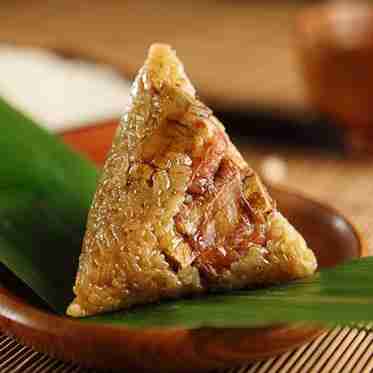
- Please note that dream interpretations are subjective and can vary based on personal beliefs and cultural contexts.
How To Make Easy Chinese Sticky Rice Dumplings?
Depending on what area you’re from either in China or other countries around Asia, you will find different techniques of preparing zongzi. This varies based on your choice of rice, fillings, and even the type of leaves.
For an easy way to make zongzi, here six simple steps you can use to enjoy the delicacy in the comfort of your home:
Step 1: Prepare the leaves.
In this case, the two main leaves used are bamboo shoots or reed leaves. To prepare them wash them thoroughly and place them in a stockpot. Submerge them in cold water and add a tablespoon of vegetable oil to ensure the rice doesn’t stick on the leaves. Boil the leaves for 30 minutes. After that leave them soaking overnight, before rinsing them and snipping the ends.
Step 2: Prepare the fillings.
For the glutenous rice, start by rinsing it under running water and soak it overnight as well, or for four hours at least. After soaking, mix the rice with salt and light soy sauce. You can either fry the rice with vegetable oil briefly or set it aside for filling. As for other fillings, you could use meat like pork, beans, chestnuts, or even salted egg yolk. It depends on your preference of how sweet or savory the zongzi should be. You can prepare the choice of filling as per your liking.
Step 3: Wrap the zongzi.
Pick two leaves one slightly smaller. Place the smaller leaf on top of both of them smooth sides facing up. Shape the leaves into a cone and fill it with rice and other fillings. Once properly stuffed, fold the top leaves to seal the cone. Press it firmly with your hands to secure its shape and ensure it doesn’t fall apart.
Step 4: Tie the zongzi.
You can either use special twine from an Asian shop or kitchen twine. Ensure you soak the twine for an hour before using it. Once ready use the twine to tie the wrap tightly and securely.
Step 5: Cook the zongzi.
In a stockpot, add water enough to submerge the zongzi and bring it to a boil. Add the zongzi you’ve prepared at this point and let them boil for six hours. Keep adding boiling water, if necessary, until the time is up. Drain the water and freeze them immediately after they cool.
Step 6: Reheat the zongzi when ready to eat.
Once you’re ready the eat the zongzi steam it for twenty minutes. Keep in mind that you can preserve the zongzi for a month, so ensure you eat them by that time.
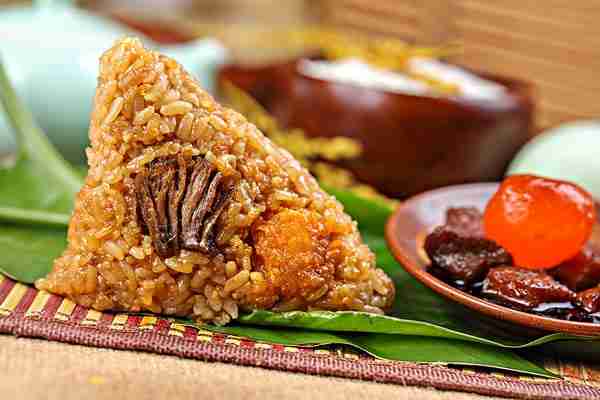
zongzi vs sushi
Millions of people all over the world love the Asian staples of zongzi and sushi. Though they have some things in common, they are not the same in terms of ingredients, flavors, or cultural significance.
Traditional Chinese zongzi are made by wrapping glutinous rice with fillings like pork, egg yolk, and mushrooms in bamboo or reed leaves. Soy sauce, sugar, and other spices are used to give the rice its signature flavor. The Dragon Boat Festival is a cultural celebration in China that honors the life and death of the ancient Chinese poet Qu Yuan, and zongzi is a common food served during this time.
But sushi is a Japanese dish made with vinegared rice and topped with raw fish, seafood, and vegetables. Many sushi restaurants offer additional condiments, such as wasabi and pickled ginger, to complement the fish. Sushi tends to have a more muted and delicate flavor profile, with an emphasis on the ingredients’ inherent tastes.
The method of preparation is a major distinction between zongzi and sushi. When compared to sushi, which is typically served raw or only lightly cooked, zongzi is best when steamed. The ingredients used in each dish are also unique. While sushi typically features fish and seafood, zongzi can be filled with a wide variety of ingredients.
While zongzi is steeped in Chinese history and tradition, sushi has become a worldwide phenomenon thanks to its popularity among diners of all backgrounds. While similar in terms of flavor and presentation, these two dishes couldn’t be more distinct in terms of their history, ingredients, and cultural significance. Your preference for zongzi or sushi depends on your own unique culinary history and preferences.
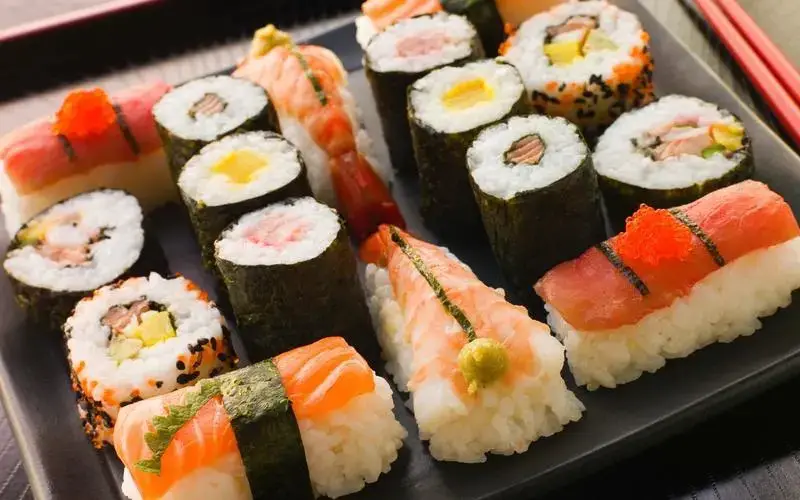
zongzi vs onigiri
People all over the world love zongzi and onigiri, two delicious Asian snacks. Though they have some things in common, they are not the same in terms of ingredients, flavors, or cultural significance.
Zongzi is a traditional Chinese food made of glutinous rice wrapped in bamboo or reed leaves and filled with various ingredients such as pork, egg yolk, and red bean paste. Leaves are added to rice that has been cooked with either savory or sweet ingredients to create a dish with its own distinct flavor. The Dragon Boat Festival is a cultural celebration held annually in China to honor the life and death of the ancient Chinese poet Qu Yuan, who is often associated with the Zongzi.
On the other hand, onigiri is a traditional Japanese food that consists of a ball or triangle of rice wrapped in nori (dried seaweed). The rice is typically filled with a variety of ingredients like pickled plums, salmon, or tuna and seasoned with salt or furikake (a Japanese seasoning mix). You can get onigiri at any convenience store or restaurant in Japan because they are so widely available.
The method of preparation is a major distinction between zongzi and onigiri. Onigiri are formed from steamed or boiled rice, while zongzi are cooked in one of two ways. The fillings used in each dish are also distinctive. Zongzi can have any number of fillings, while onigiri typically have one or none.
Zongzi has deep historical and cultural roots in China, while onigiri has become an integral part of Japanese life. While similar in terms of flavor and presentation, these two dishes couldn’t be more distinct in terms of their history, ingredients, and cultural significance. The choice between zongzi and onigiri comes down to individual preference and cultural background.
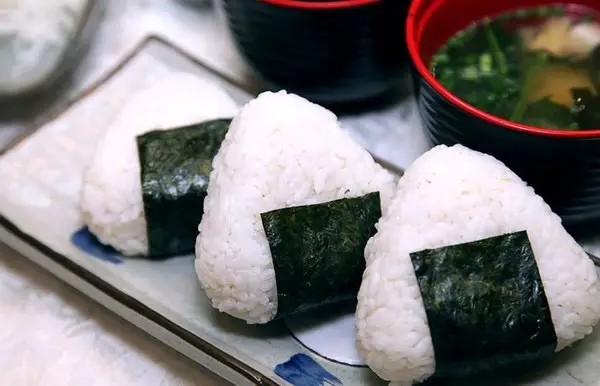
Conclusion.
The beauty of Zongzi is that you can create them as per your preference. You can add the fillings of your choice and create them as big or small as possible. Aside from being delicious, they are considered auspicious food that brings success and luck to those who eat it. Next time you’re planning a vacation, make sure to attend the dragon boat festival and enjoy the authentic zongzi that’s been traditionally made.